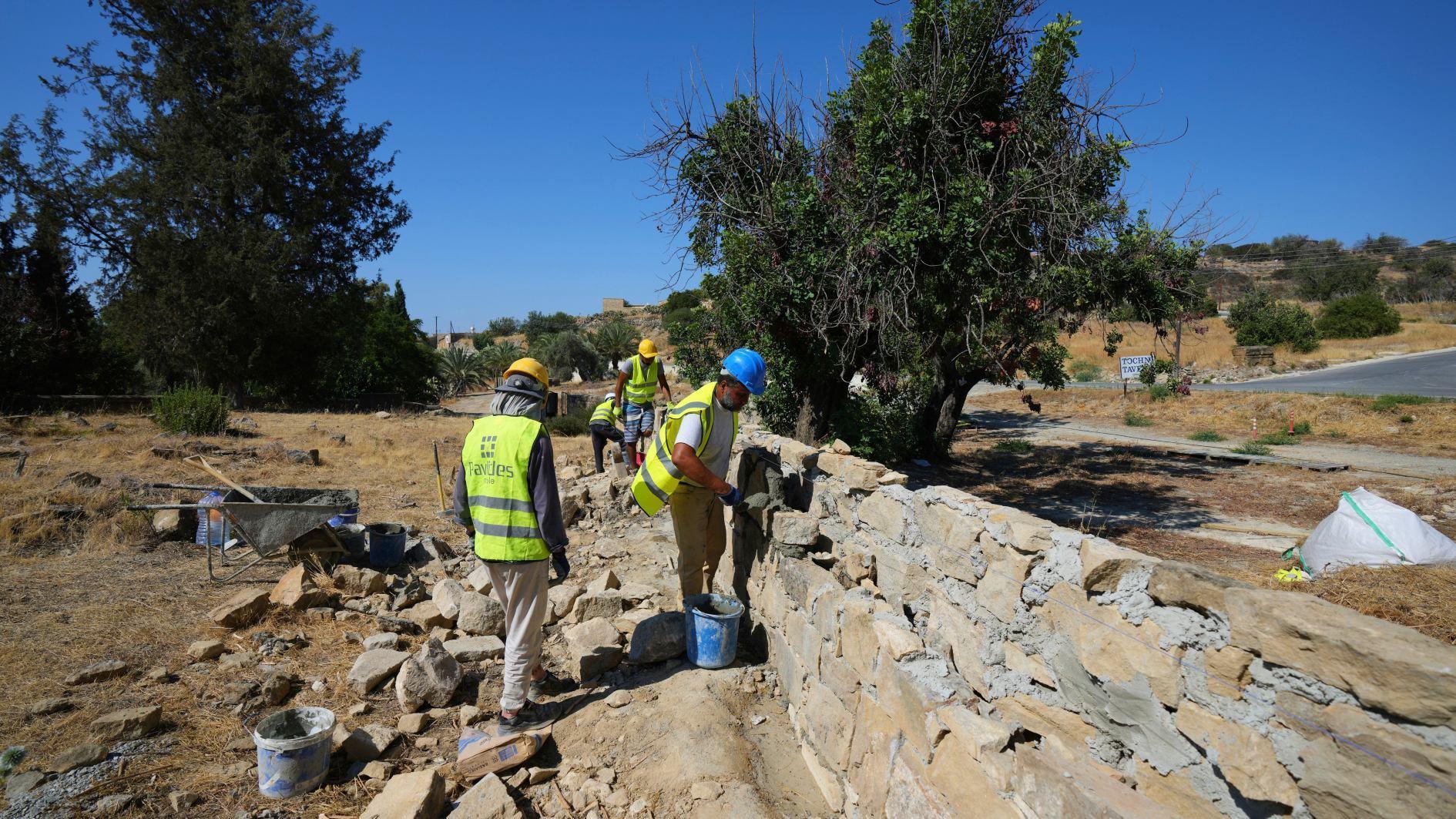
Turkish Cypriots and Greek Cypriots have teamed up to restore each other’s cemeteries, aiming to mend mistrust and promote peace more than half a century after the island’s division.
On both sides of the ethnically split island, the damage remains visible. In the north, Greek Cypriot cemeteries lie overgrown with shattered crosses; in the south, Muslim headstones in Turkish Cypriot cemeteries are hidden by weeds. Until 2003, a U.N.-controlled buffer zone prevented relatives from visiting graves.
Restoration is now underway at 15 civilian cemeteries on each side of the Green Line cutting across the Mediterranean island. Expansion of the roughly 700,000-euro project ($815,000) to more cemeteries is being considered.
“The maintenance and restoration of cemeteries constitutes one of the most symbolic and morally pressing acts for a place that strives for reconciliation,” said Sotos Ktoris, the committee’s Greek Cypriot member.
The committee has previously restored churches, mosques and other monuments. In May, its mandate was expanded by Greek Cypriot President Nikos Christodoulides and Turkish Cypriot leader Ersin Tatar to include cemeteries, with U.N. support.
In Tochni, Greek Cypriot workers rebuilt the century-old wall of a Muslim cemetery.
“Just as we demand that they respect us, our dead, our religion and so forth, I believe that we owe the same respect to them,” said local leader Charoulla Efstratiou.
Many Turkish Cypriots from the north are now visiting the village to reconnect with their past, find family homes and honor their ancestors.
In the village of Palaikythro that Turkish Cypriots have renamed Balıkesir, broken crosses at the Greek Cypriot cemetery have been set upright again until they’re fully mended.
Virtually nothing was left intact. Turkish Cypriot contractor Recep Güler said it wasn’t easy to restore the external walls and gate.
Mürüde Erzen, the village’s Turkish Cypriot community leader, said the cemetery is part of shared cultural heritage. “When I saw this place, I was very upset, wondering why it had become like this,” Erzen told the United Nations Development Program.